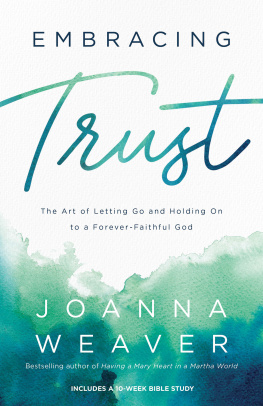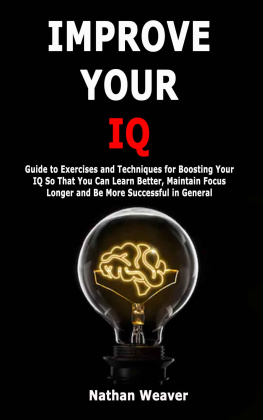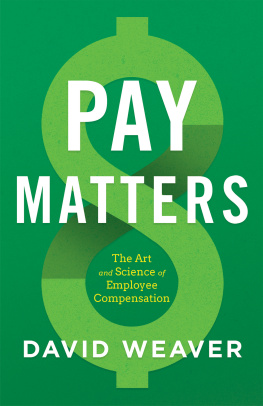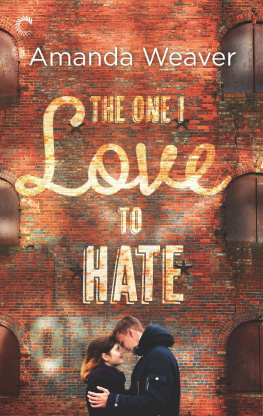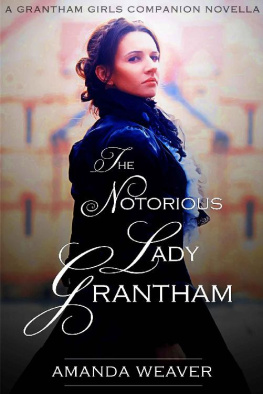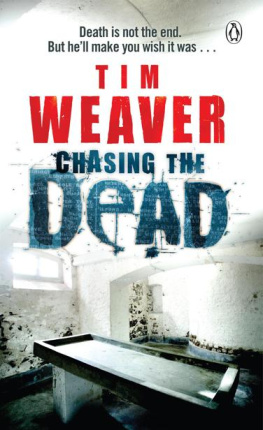First published by Lawrence Erlbaum Associates, Inc., Publishers
10 Industrial Avenue
Mahwah, New Jersey 07430
Transferred to digital printing 2010 by Routledge
Routledge
270 Madison Avenue
New York, NY 10016
2 Park Square, Milton Park
Abingdon, Oxon 0X14 4RN, UK
Library of Congress Cataloging-in-Publication Data
Weaver, David H. (David Hugh), 1946
The American journalist in the 1990s : U.S. news people at the end of an era / David H. Weaver, G. Cleveland Wilhoit.
p. cm.
Includes bibliographical references and index.
ISBN 0-8058-2135-X. ISBN 0-8058-2136-8
1. JournalistsUnited States. 2. JournalismUnited States History20th century. I. Wilhoit, G. Cleveland. II. Title.
PN4871.W42 1996
070'.922'73dc20
96-17622
CIP
10 9 8 7 6 5 4 3 2 1
Foreword:
Background CheckWhy the Public Needs to Know More About News People
Everette E. Dennis
The Freedom Forum Media Studies Center
Once again we are indebted to Professors David H. Weaver and G. Cleveland Wilhoit for their anthropological exploration of Americas newsrooms to identify and catalog the species found therein, that of homo joumalisticas. Conducted with sociological care, their decennial inquiry could also be used to trace what might be the ultimate demise of journalism as we know it. We are in an era of sea changes in the media industries, when news people with different characteristics and values from those of the past are emerging to create the new journalistic jungle.
It is appropriate to ask, however irreverently, why we care about such an exercise. The fact that Leo Rosten provided a vivid portrait of Washington correspondents in the 1930s, replicated by William L. Rivers in the 1960s, or that John Johnstone and his colleagues at the University of Illinois provided earlier evidence, built on by Weaver and Wilhoit in 1982 and again in 1992, is not reason enough. The reason we care at all about the nature, characteristics, and mating habits of American journalists, more than we seem to care about similar data on doctors, lawyers, accountants, or undertakers, is that we think it matters and that it has been the cause of much controversy.
It is worth noting that the findings of this study run counter to and break through several realities of and about journalism and journalists, such as:
1. The isolated nature of the craft and profession. Journalists lack sufficient knowledge about others like them beyond their own workplace, and often have little knowledge of the history of their field.
2. The belief that there is danger in definition. Courts and constitutional scholars have been wary about defining who journalists are and what journalism is. When one asks who they are, there is a debate over whether the designation journalist applies only to those employed by media organizations or also to lonely pam-phleteers, freelance writers, and others. This was underscored in an exchange between Carol Simpson of ABC News and talk show host Larry King at a Harvard conference when he said, I may not be a journalist, but what I do makes journalism.
There is also a fear of saying what journalistic standards should be, both in terms of education and theory, as well as what they actually produce. There is no requirement for responsibility or fairness, the courts say. Still, this means that the First Amendment can serve as a great bulwark for free expression, or a convenient rationale for ignorance or an arrogant refusal to discuss journalistic definitions.
3. The belief that studies like this one will be misused. Some people believe that research will be fodder for forces trying to influence, coddle, and manipulate the media. Forbes Media Guide, marketed to public relations (PR) firms and other organizations, for example, is largely used by those who want to prepare for interviews. Additionally, when one mentions detailed information about jour-nalists, some critics immediately will misuse or distort it. For example, there is a lust for information about ideology, which ideologues use to prove their case that the press is too liberal or too conservative, anti-business or pro-business, and hostile or not to minorities and women. In light of the 1992 presidential campaign, when claims of media bias were made, studies of this kind would be helpful in providing factual information based on evidence, not just opinion. Thus, research about journalists can be useful in: (a) satisfying the sheer curiosity of media watchers and news junkies; (b) considering the relationship between news peoples backgrounds and what news consumers actually get; (c) taking the temperature of the newsroom and making an inventory of the workforce to learn whether there is any link between public attitudes about journalists and who journalists actually are and what they believe; and (d) moving beyond generic generalizations about the media and understanding people who work for the media.
In the Weaver-Wilhoit data, there is much to celebrate about the vitality and vibrancy of American journalism. The size, scope and composition of the workforce are impressive by any worldwide standard. There are some suspicions and expectations confirmed, a few surprises, and some reasons to be worried about the future and robustness of this singularly important occupation and profession. In fact, I am concerned enough about what these findings tell us about healthy American journalism to wonder whether this study is merely an inquiry, or whether it can be characterized also as a preliminary inquest.
Beyond the natural curiosity of the media navel gazers and news junkies, the only reason the public should care about research on journalists is that there is good cause to wonder whether there is any relationship between who these journalists are and what we ultimately get from them in our news products. This also leads quite naturally to the subject of professionalism, and whether that intervening factor somehow transforms the human frailties of journalists, who are rather unlike most of the American population. We do not worry much about a doctors politics or religion influencing the kind of care we get, and we assume that even lawyers with whom we disagree on most things are capable of defending our interests in court. At the same time, we care greatly about the health and sanitary habits of those who work in restaurants or sausage factories. For such reasons, we should care about journalists and their news-processing practices.
If who American journalists are influences, shapes, and biases the news, we should care very much about the current inventory of this species. Of course, there has been controversy about bias in the press for a long time. In recent years, various media-watcher lobbies and special interests have told us that the press is too liberal or too conservative, insensitive to critical issues in American life, or out of touch on such matters as race and gender. Still, in 1986, when Professors Weaver and Wilhoit reported their findings at a news conference in mid town Manhattan, Edwin Diamond of



